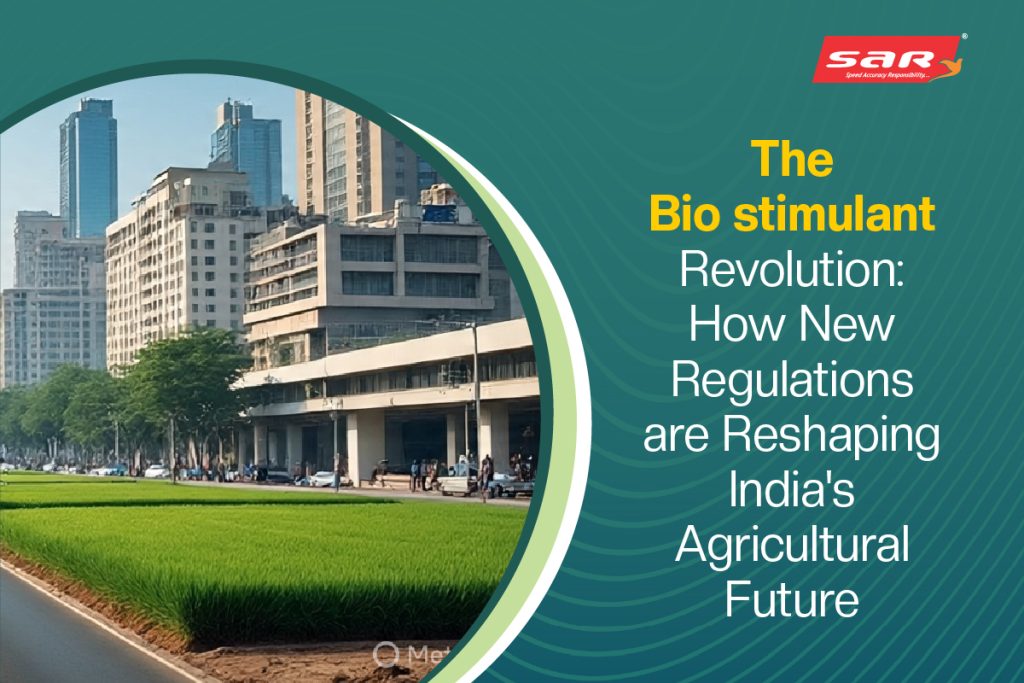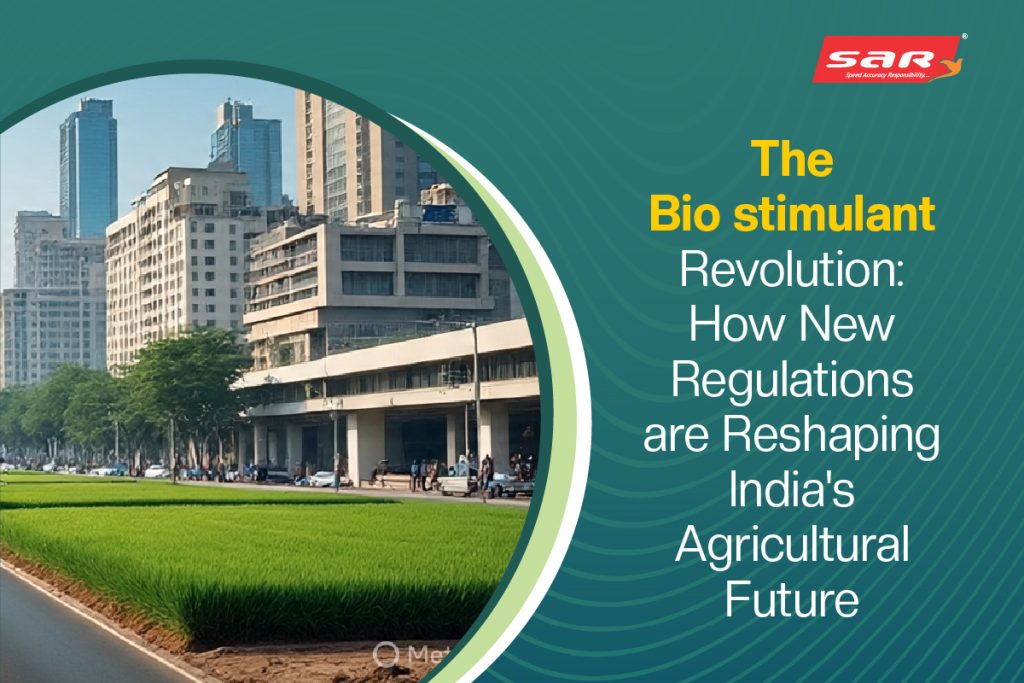
Bio stimulant Revolution is the drive through which stress-resilient agriculture of India will be seen. However, this transition is away from the input-heavy, chemical agro-industrial model towards a sustainable and consequently more resilient farming system. A major development is the stimulus behind a new, overarching regulatory framework which is transforming and maturing the bio stimulant sector. These are not only regulations; they are the cornerstones of a new age of food production and sustainability. In this article, we get into the specifics of how this revolution is coming, starting with little things that are likely to evolve but have significant impact.
In India the biostimulants market has for many years been dominated by products which have not to pass much of legal hurdles to enter markets. The products, which boost plant growth and health, were therefore not regulated under either fertilizer or pesticide laws. A breeding environment for poor quality, or provenance unproven products was created resulting in farmer scepticism and restricting bio stimulants to fulfilling their full potential. To fill this void, significant changes were made by the government to 1985 Fertilizer Control Order (FCO). It was really the starting shot for what would become the Bio stimulant Revolution as it gave a solid framework, both legally and scientifically speaking to those innovative products.
Key Pillars of the New Regulatory Framework
The new rules are carefully designed to ensure product efficacy, safety and market integrity. They are a game-changer for the bio stimulant revolution and are built on several major columns:
- Official Definition and Classification: Rules provide a clear and legally binding definition of bio stimulants. They are now classified as substances or microorganisms, when plants are applied to seeds, or root zones, stimulating the processes of natural plants to increase nutrients, improving incentive stress tolerance, and increasing crop quality and yield. This clarity is important to separate them from traditional fertilizers and pesticides.
- Compulsory Registration Process: A rigorous registration process is now mandatory for all bio stimulants. Manufacturers will have to present detailed scientific data on the composition of the product, the methods of action and efficacy. This data is reviewed by the newly established Central Bio stimulant Committee, ensuring that scientifically supported products enter the market.
- Scientific Verification and Field Testing: A foundation stone of the new structure is required for multi-place efficacy tests. Products should be tested in recognized agricultural institutions, such as under the Indian Council of Agricultural Research (ICAR). This ensures that the benefits of a bio stimulant are proved in various agricultural-class conditions, which gives farmers confidence in their effectiveness.
- Quality Control and Safety Standards: Rules determined strict quality control measures, including boundaries on heavy metals and pesticides. Comprehensive poisoning and ecotoxicity tests are also required to ensure that products are safe for environment, farm workers and final consumers. These tough standards are important for long -term credibility of the Bio stimulant Revolution.
Impact of the Regulations on Indian Agriculture
The impact of these new rules is already being felt in the agricultural price chain. This regulator clarity is the motivational power behind the bio stimulant revolution, which leads to important positive changes:
Industry Commercialization: The new structure is making the bio stimulant sector professional. Scientific data and testing requirements have a high barrier to admission, excluding low quality players and installed, in favour of research-operated companies. This market is leading to focus more on consolidation, greater focus on innovation and product development.
Transition to Sustainable Cultivation: The bio-stimulants are a principal weapon for sustainable vegetation. They can supplement dietary needs of food crops, without increasing the use of synthetic fertilizers and reducing environmental issues such as soil erosion, loss in nutrients – nutrient use efficiency- and water quality degradation. They also help to condition a plant to environmental stressors that may occur, such as drought and heat from climate change. This inclusion of sustainable practices represents a central idea in the Bio stimulant Revolution.
Empowerment of Farmers: New rules empower farmers to make informed options. Compulsory registration and scientific verification mean that farmers can now rely on the efficacy of products carrying official government registration numbers. It also helps in curbing inappropriate market practices, such as “tagging” of unproven bio stimulants with subsidized fertilizers.
Economic Development and Investment: Regulatory clarity is attracting significant investment to both domestic and foreign in the Indian bio stimulant market. This influx of capital and expertise is promoting innovation and market development. The Indian bio stimulant market, which is estimated to increase by USD about $ 1.1 billion more than USD in the coming years, is a will for the economic capacity unlocked by the bio stimulant revolution.
Challenges and the Path Forward
While the new rules are a large -scale steps, there are challenges to address the ability of the bio stimulant revolution completely:
Long-Term Registration Timeline: required while rigorous registration process may be time consuming and resource-intensive for manufacturers. Laying this process without compromising on quality is a continuous challenge.
Farmers Education and Awareness: The success of the bio stimulant revolution rests on the adoption of the farmer. Many farmers still lack a clear understanding of what bio stimulants are, how they work, and their benefits. Comprehensive outreach and education are necessary through government agencies, agricultural universities and private sector initiatives.
Fake Products: Despite the new rules, there is a risk of fake or non-contact products entering the market. A transparent public database of strong enforcement mechanisms and registered products is important to deal with this issue.
Conclusion
The new rules are more than only one legal framework; They are the engine running the bio stimulant revolution in India. He has converted a newborn, irregular sector into a professional, science -backed industry. This revolution promises to give the future of farming which is not only more productive and profitable, but also flexible for environmentally friendly and climate change challenges. Hugging this change, India is not only modernizing its agriculture; It is securing the future of its food and positioning himself as a leader in sustainable farming. The bio stimulant revolution is here, and it is ready to reopen India’s agricultural fate for the coming generations.


